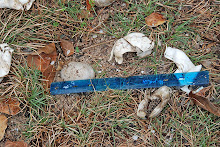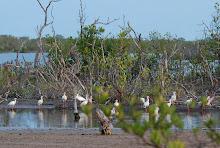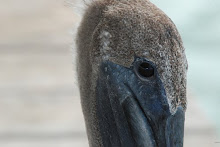
Small fish move with the tides to access mangrove areas, where they find protection, and to the salt marsh, where some feed. Mangroves shade water and sediment, buffering temperature and blocking UV radiation, providing a habitat for other organisms.
Some fish move upstream and downstream, to fresh and marine water habitats at different stages of their life cycles to breed and spawn. Mangroves are important nursery areas for some juvenile fish and crustacean larvae.
Water flow between wetland pools and estuaries during very high tides or run-off events allows fish to move between these habitats. Many organisms in estuarine wetlands live in burrows or on the sediment, including worms and microbes.









No comments:
Post a Comment